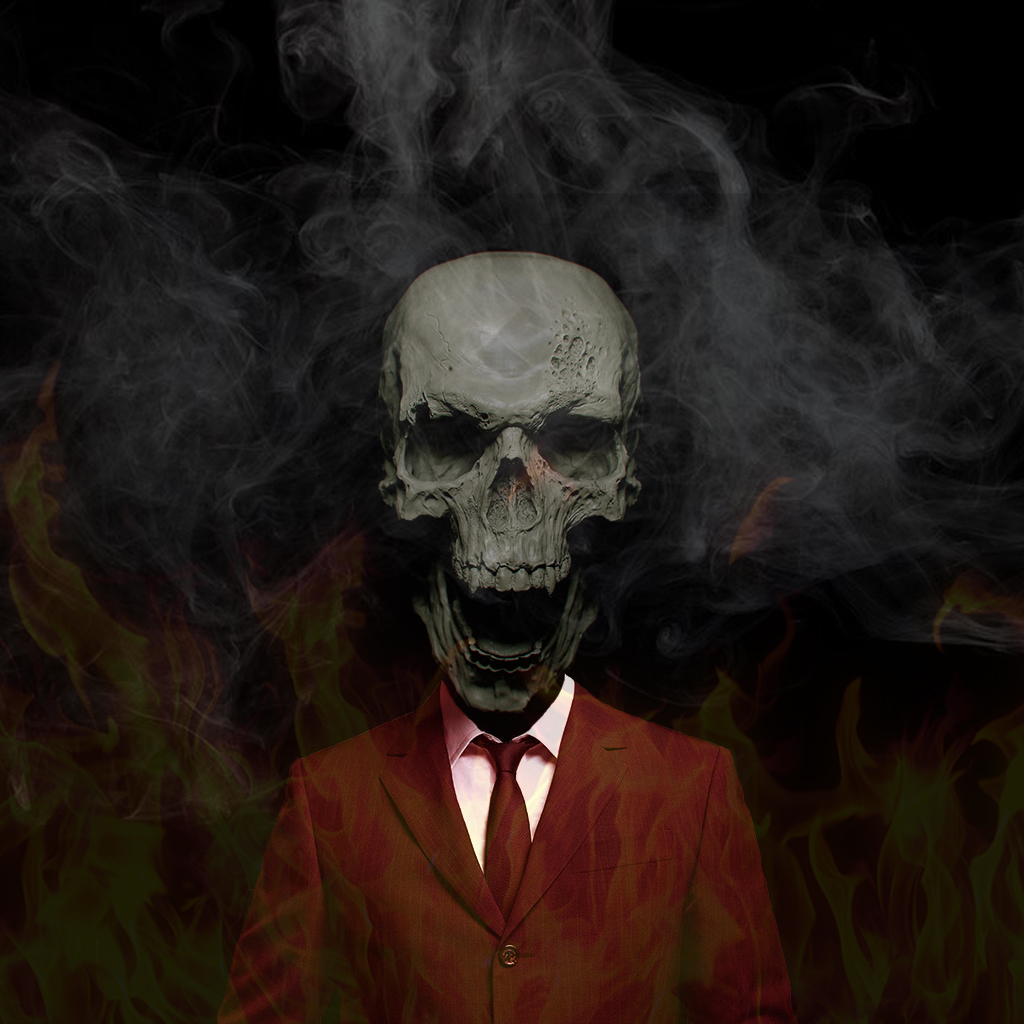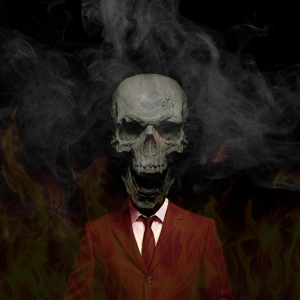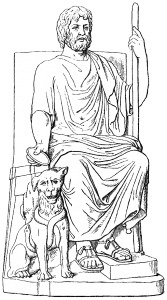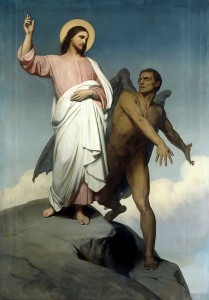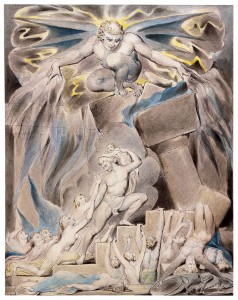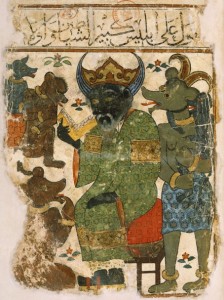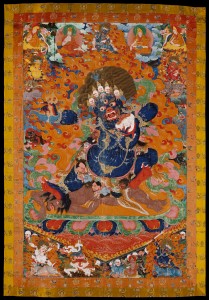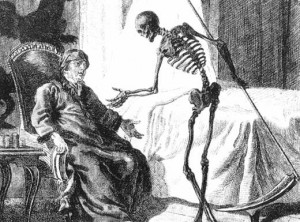For the first Bridge Project, we were to choose a character in Seminar and provide 10 different versions of that character. The character I chose was the Devil.
How can you represent a character that is more than a figure, but a concept?
The following is the complete essay of the Devil for Seminar 2.
The Devil
There are many different perceptions of the Devil in a world filled with different cultures and religions. Many view the devil as an emissary of God, a god himself, or an angel expelled from heaven, while others might see the concept of the devil more that a figure itself. Yet, all representations are the same regarding the role of the devil and its characteristics- an entity responsible for sin, evil and hate. A devil might not be one in charge of an unknown hell, but he is able to punish the wrongdoers and cause mankind to sin.
The following perceptions of the devil are scattered across different religions and geographical areas. Some are separated by time while others are almost exactly the same.
Hades:
A different perception of the underworld keeper; Hades, is not an angel or an envoy, but one of the gods of the ancient Greek mythology. With the help of his two younger brothers, Zeus and Poseidon, they were able to conquer the Cosmos from the Titans. Hades was granted rulership on the underworld in the aftermath of the battle.
Hades, although not described as evil, used trickery and violence to achieve his demands, one of such was obtaining his wife, Persephone. As the mythes presents, Hades was more concern of the dead he kept than the world above.
Since being the god of the dead, many people feared of Hades. Out of the Greek Mythology gods, he is the least described of them all, and out of fear of death, many refused to say his name.
The Devil- Christianity:
The Devil in mainstream Christianity is believed to be an angel who rebelled against God and was condemned to rule hell. He is described to hating all mankind and to create havoc and chaos. Many consider the Devil responsible for men sins and to the disbelief in God. The Devil is believed to torture those in hell for their sins.
Satan- Judaism:
The concept of Satan (meaning “to digress” in Hebrew) in Judaism is explored through different parts of the bible, although always revolving around the concept of “straying away” from the right path. In Judaism, the concept of hell is nonexistent, yet Satan is described as an angel of God responsible of doing God’s difficult work regarding humans. His roles include to kill in God’s mission; to accuse at the law court of heaven, especially when sin is involved; and to inform God of the sins of men. Satan is described as the evil inclination of men; he is the evil inner power of men that leads us to sin.
The Serpent:
In the book of Genesis, in the known story of Adam and Eve, the Serpent is the one leading Eve to sin and eat the forbidden fruit of the Tree of Knowledge of Good and Bad, thus leading to the banishment of Adam and Eve from the Garden of Eden. In the story, he tries to trick Eve into sin to prove to God of the nature of men. a serpent is a symbol of chaos in the underworld and evil power. It is a form of a snake, a symbol of evil.
Iblis- Islam:
The devil in Islam is known as Iblis or Shaitan. The meaning of the name is equivalent to the translation of Satan in Hebrew- meaning to digress from the right path. Iblis is considered to “whisper” into the hearts of men and lead them to sin. In the Quran, Iblis is described as prideful, and that he is the assistant of those who do not believe in god. The Quran also mentions that Iblis is a demon and that he is an angel of darkness, opposite to the angels of god made from light.
Yama- East Asia:
Yama, also known as the King of Hell, is a Dharmapala (wrathful god) in East Asian mythology. His role is to judge the dead and rule over the hell. The legend says that Yama will ask a person who has done wrong to others if they are remorseful for their ill-doing. If not, they will be send to hell. Yama can also decided that the person questioned deserves to reborn.
The Angel of Death:
The Angel of Death, or its well known name the Grim Reaper, is a concept of death explored through many cultures. It is commonly believed that a skeletal figure dressed in a hooded black cloak and a scythe, is a sign of the approaching demise of a person. Many believe that his appearance is just an indication to death, while others believe he has the power to choose who dies.
God as the Devil:
Although controversial, there are few who believe that God is not only good, but evil as well. As the biblical stories presents, God is able to bring havoc, death and chaos into the storyline. He is not only the creator of light, but he is also the creator of plagues, floods and darkness. Many address the names used to describe God in the bible as evidence of being not only good; names such as “the Prince of Darkness”, “the devil God” and “source of all evil”.
Mankind as the Devil:
A concept presented through history, a belief in the wrongdoing of mankind in a world disturbed by the modernization; the view of mankind as a living devil to nature and to its own well-being. Similar to the perception of God as the Devil, mankind is slowly starting to comprehend the negative affects it is causing to an un-technological world. From the stories of the sins of men in the bible and the punishments God has cast upon them, to horrific wars and the destruction of nature, mankind is slowly establishing a name for itself as a bad influence on an innocent world. The global warming caused by mankind and its greed to improve humanity’s life condition all while disregarding the fast decay of the world we live in, is only one example of how mankind is its own devil.
The Modern Day Devil:
The modern day devil is explored through the variety of popular culture- music, art and television/ film. Visually, most often, the devil in popular culture is presented as man with red skin, horns, hooves or bird legs as legs, a tail with a sting and holding a pitchfork. He may also have yellow eyes. However, in the modern day, the devil is more of a concept than a figure. He is the definition of evil. He presents trickery and cunningness; a figure of rebellion and an outcast. Many describe historical figures (one such as Adolf Hitler) or politicians as a modern day devil. In music, genres of rock (such as metal) are referred to as the “devil music”- they present ideas of evil, rebellion and disbelief in God. The modern day devil explores more of the devil inside men than the devil described as the keeper of hell.
Visually, all of these versions of a devil are vague; some where never mentioned due to fear, others have described the devil as a concept and not a figure. These devils, although different visually due to different cultures and different art styles, have a common idea- fear. Their looks are unimportant, for the whole concept of the devil is the main focus of his existence. By believing the devil is the inclination of evil rather than a real figure, the visuals of said devil gets even vaguer- for, the Devil changes with every one and how can one describe evil and sin as an image?
